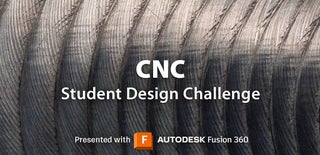Introduction: Filament Use Challenge
I have been teaching at Heritage High School in Littleton, CO for the last 22 years. I have spent most of my time teaching Physics but over the past few years I have transitioned to teaching our STEM courses. I try to incorporate the problem solving and mathematical reasoning required in Physics to the STEM courses and this project comes from that vein. Our engineering classes create and 3D print designs throughout the year. As a result, we use a large amount of filament and we end up with the remnants of filament. Spools which still have some filament remaining but not enough for a 3D print. This project is inspired by the desire to not waste filament and to maximize the raw materials that we use. This mindset will hopefully help students as they move forward in engineering and manufacturing to be cognizant of the materials they are using both for cost savings and environmental impact.
The other aspect of this project is to understand different settings for the 3D printing process. Students should experiment with different infill densities and support structures.
Supplies
3D Printer and Slicing Software (we have Flashforge Adventurer 3 printers and the accompanying FlashPrint slicing software, the type of printer and slicing software should not matter too much for this project)
3D Printing Filament
- 10 g bundles for each groups
- Extra filament for testing and experimentation
Step 1: Filament Challenge
Your group will receive a sample of filament and will need to print a cubic model which uses as close to 10 grams as possible.
Contest Rules
- Your group will receive 10 grams of filament. Teacher Note: On experimentation, for our printers 10 g of filament was too little and some was left over in the Boden tube. Providing a little extra filament provided better results.
- Take the mass of your filament before loading it into the 3D printer.
- The 3D printer needs to be empty (all filament unloaded) when you start.
- The team with the highest percentage of filament used will win
% of Filament Used in Model = (Mass of Final Product/10 g) x 100
In case of a tie, the team which creates the object with the largest volume wins.
Step 2: Calibrate the Printer
- For this part of the project, you are not limited by a certain amount of filament. This is your time to experiment and figure out how the printer works.
- Once you have your model, slice it with your slicing software for the 3D printer that you plan to use. The best model will be a cube of some sort.
- Look at the sliced file and note the projected mass of filament that will be used in the print.
- Find the mass of your filament by measuring it on a scale.
- It is likely that the calculated filament usage will be different from the actual filament usage. Your group will need to come up with a way to account for the differences between the calculated filament usage and the actual filament usage.
- Unload any filament in the printer and load the filament that you plan to use. Note how much filament is extruded when you load your filament and how much filament remains.
- Adjust your model accordingly and retest until you are confident that you will be able to maximize your 10 g of filament.
Step 3: Additional Things to Consider
- The slice preview will give you an estimate of the filament used. This will be calculated based on the slicing software and the density of the preloaded filament. It may not match what your group actually gets. When creating this example, the software gave a mass of 8.02 grams and the actual printed cube was 7.2 grams. You will need to adjust the predicted mass using the actual mass.
- It is most likely that your group will want to remove the raft since you are printing a cube and the raft is not necessary.
- In the slicing software, you can adjust the infill density and the shape of the infill. Since the tie breaker is volume, your group may want to play with those values to see if you can maximize the volume of your cube.
Step 4: Print Your Final Model
- When you feel like you have your best model, get your 10 g of filament from the teacher.
- Find the mass of the filament before you start.
- Load your filament and print your project
- Find the mass of your printed project and the mass of the remaining filament.
- Calculate the ratio of filament used and the volume of the block. Turn these into the teacher.

This is an entry in the
Project-Based Learning Contest









Comments